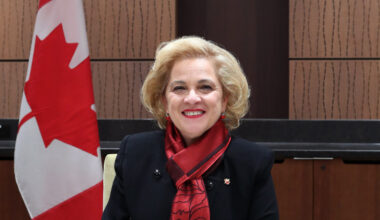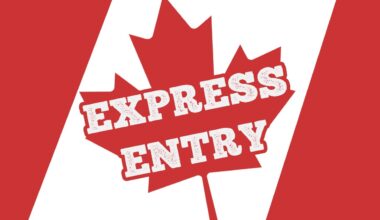Just two days after the first Express Entry draw under new Immigration Minister Lena Metlege Diab, Canada has conducted its second healthcare and social services category draw of 2025, issuing 500 Invitations to Apply (ITAs) to qualified professionals. With a CRS cutoff of 504 points, this draw demonstrates Canada’s continued commitment to addressing critical shortages in healthcare and social services sectors.
Breaking Down the June 4 Healthcare Draw
The latest draw specifically targeted candidates working in healthcare and social services occupations, requiring:
- Minimum CRS score: 504 points
- Profile creation deadline: Before March 31, 2025 (6:47 a.m. UTC)
- Professional experience: At least six months of continuous work experience in eligible healthcare or social services occupations within the past three years
This represents a slight improvement from the previous healthcare draw on May 2, which had a cutoff of 510 points, suggesting either increased competition among healthcare professionals or refinements in the pool composition.
Why Healthcare Draws Matter More Than Ever
“These consistent healthcare draws aren’t just about filling positions – they’re about saving lives,” explains Dr. Patricia Wong, a healthcare policy researcher. “Every nurse, physician, and social worker we bring to Canada directly impacts the wellbeing of Canadian communities.”
The Numbers Tell the Story
Canada’s healthcare system continues to face significant pressures:
- Over 6.5 million Canadians don’t have access to a family doctor
- Nursing shortages have reached critical levels in many provinces
- Mental health and social services are overwhelmed with demand
- Rural and remote communities face particularly acute shortages
What Occupations Qualify
The healthcare and social services category includes professionals in various National Occupational Classification (NOC) codes:
Healthcare Professionals:
- Physicians and specialists
- Registered nurses and nurse practitioners
- Licensed practical nurses
- Medical technologists and technicians
- Pharmacists and pharmacy technicians
- Physiotherapists and occupational therapists
- Dental professionals
Social Services Workers:
- Social workers and family counselors
- Community and social service workers
- Early childhood educators and assistants
- Educational support workers
- Personal support workers
Comparing This Draw to Previous Healthcare Selections
Looking at Canada’s healthcare-focused draws in 2025:
| Date | ITAs Issued | CRS Cutoff | Key Insights |
|---|---|---|---|
| May 2, 2025 | 500 | 510 | First healthcare draw of the year |
| June 4, 2025 | 500 | 504 | Slight decrease in cutoff, consistent volume |
The 6-point decrease in the CRS cutoff suggests either:
- More healthcare professionals have entered the Express Entry pool
- IRCC is being slightly more inclusive to address urgent shortages
- Competition dynamics have shifted among healthcare candidates
The Strategic Context: Healthcare in Canada’s Immigration Plan
This healthcare draw comes at a crucial time for Canada’s immigration strategy. Under Prime Minister Carney’s mandate, the focus has shifted toward attracting “the best talent in the world” while maintaining sustainable immigration levels.
Why Healthcare Workers Are Priority
Immediate Impact: Healthcare professionals can contribute to Canada’s wellbeing from day one, addressing critical shortages that affect all Canadians.
Provincial Demand: Every province and territory has identified healthcare as a priority sector, making these workers highly sought after.
Economic Multiplier: Healthcare workers support broader economic activity by keeping the workforce healthy and productive.
Demographics: Canada’s aging population creates increasing demand for healthcare services, making this a long-term priority.
Success Stories: Healthcare Professionals Who Made It
Maria’s Journey from the Philippines
Maria, a registered nurse from Manila, received her ITA in the May healthcare draw with a CRS score of 512. “I had been working in Saudi Arabia for five years, but Canada’s healthcare system and quality of life made it my dream destination,” she shares. “The category-based draw made it possible even though my overall score wasn’t competitive for general draws.”
Dr. Ahmed’s Canadian Dreams
Dr. Ahmed, an emergency physician from Egypt, used the healthcare pathway after struggling with credential recognition in other countries. “Canada’s approach to internationally trained physicians, combined with this Express Entry pathway, gave me hope that my skills would be valued,” he explains.
Sarah’s Social Work Transition
Sarah, a social worker from the UK, leveraged her experience working with vulnerable populations. “The healthcare and social services category recognized that my work is essential, not just nice-to-have,” she notes.
What Makes Healthcare Candidates Competitive
Essential Qualifications
Education: Post-secondary credentials in relevant healthcare or social services fields Experience: Minimum six months of continuous full-time work experience in the past three years Language Skills: Strong English or French proficiency (typically CLB 7 minimum) Credentials: Educational Credential Assessment (ECA) for foreign degrees
Scoring Strategies for Healthcare Workers
Maximize Language Scores: Healthcare communication requires excellent language skills – aim for CLB 9+ in all abilities Document Experience Thoroughly: Detailed reference letters showing progression and specialization Consider Provincial Nomination: Many provinces have healthcare-specific PNP streams that add 600 points Highlight Specializations: Emergency medicine, geriatrics, mental health, and rural healthcare experience are particularly valued
The Provincial Connection: Where Healthcare Workers Are Needed Most
High-Demand Provinces
Ontario: Needs nurses, physicians, and mental health professionals across urban and rural areas Alberta: Seeking healthcare workers for oil sands communities and growing urban centers British Columbia: Focusing on rural physicians and specialized nurses Atlantic Provinces: Critical shortages across all healthcare categories Northern Territories: Offering significant incentives for healthcare professionals
Urban vs. Rural Opportunities
Rural and remote communities often provide:
- Higher compensation packages
- Loan forgiveness programs
- Housing assistance
- Professional development opportunities
- Faster pathways to permanent residence
Processing Realities: What Happens After Your ITA
The 60-Day Clock
Once you receive an ITA, you have exactly 60 days to submit a complete permanent residence application. For healthcare professionals, this means:
Immediate Actions:
- Gather all educational transcripts and credentials
- Obtain police clearances from all countries where you’ve lived
- Complete medical examinations
- Compile detailed work experience documentation
- Prepare settlement funds proof
Timeline Management:
- Week 1-2: Document gathering and organization
- Week 3-4: Police clearances and medical exams
- Week 5-6: Application compilation and review
- Week 7-8: Final review and submission
The Six-Month Processing Promise
IRCC aims to process complete applications within six months, though healthcare professionals often experience faster processing due to:
- Priority designation in some offices
- Complete documentation (healthcare workers are typically well-organized)
- Clear credential pathways in healthcare fields
Looking Ahead: Healthcare Draw Predictions
Based on current trends and healthcare workforce needs, we anticipate:
More Frequent Healthcare Draws
With only two healthcare draws so far in 2025, increased frequency seems likely given ongoing shortages.
Potential Score Reductions
As more healthcare professionals enter the pool, IRCC may lower cutoffs to address urgent needs.
Expanded Categories
Future draws might include specific sub-categories like:
- Mental health professionals
- Rural healthcare workers
- Specialist physicians
- Long-term care workers
Integration with Provincial Programs
Enhanced coordination between federal healthcare draws and provincial health authority recruitment.
Practical Advice for Healthcare Professionals
 If You’re Already in the Express Entry Pool
If You’re Already in the Express Entry Pool
Update Your Profile: Ensure all healthcare experience is properly documented Improve Language Scores: Even small improvements can make a significant difference Consider Provincial Nomination: Many provinces have healthcare-specific streams Stay Active: Maintain your profile and be ready to respond quickly to ITAs
If You’re Considering Express Entry
Research Credential Recognition: Understand requirements in your target province Gain Canadian-Relevant Experience: Consider temporary work permits to build Canadian experience Network Professionally: Connect with Canadian healthcare associations Prepare Financially: Ensure you have settlement funds and can cover application costs
The Broader Impact: Healthcare Immigration Success
System-Wide Benefits
Healthcare-focused immigration provides:
- Immediate workforce solutions to critical shortages
- Geographic distribution as healthcare needs exist everywhere
- Long-term stability through permanent residence pathways
- Community integration as healthcare workers are valued everywhere
Economic Multiplier Effects
Each healthcare professional can:
- Support dozens of other workers by keeping them healthy
- Enable other immigrants to access healthcare services
- Contribute to community stability and growth
- Generate significant economic activity
Common Challenges and Solutions
Credential Recognition
Challenge: Complex licensing processes vary by province Solution: Begin credential assessment early and consider bridging programs
Rural Placement
Challenge: Many opportunities are in smaller communities Solution: Consider rural placement as a pathway to Canadian experience and faster integration
Language Requirements
Challenge: Healthcare communication demands high language proficiency Solution: Invest in professional language training specific to healthcare contexts
Family Integration
Challenge: Relocating families while starting new careers Solution: Research settlement services and community support networks
Minister Diab’s Healthcare Vision
As a former provincial minister who worked closely with healthcare systems, Minister Diab brings unique perspective to federal healthcare immigration:
Provincial Experience: Understanding how healthcare recruitment impacts communities Integration Focus: Emphasis on successful settlement and credential recognition Strategic Planning: Long-term approach to healthcare workforce development
The Global Context: Why Canada Leads
Canada’s approach to healthcare immigration stands out internationally:
Streamlined Pathways: Express Entry provides clear, merit-based selection Provincial Flexibility: PNP programs address specific regional needs Integration Support: Comprehensive settlement services Career Development: Opportunities for professional growth and specialization
Success Metrics: Measuring Impact
Early indicators suggest healthcare-focused immigration is working:
- High Employment Rates: Healthcare immigrants find work quickly
- Geographic Distribution: Better spread across provinces than general immigration
- Professional Satisfaction: High retention rates in healthcare careers
- Community Impact: Measurable improvements in healthcare access
Conclusion: A Healthy Future for Canadian Healthcare
The June 4 healthcare draw represents more than just 500 invitations – it’s a commitment to addressing one of Canada’s most pressing challenges. By consistently prioritizing healthcare professionals in Express Entry selection, Canada is building a stronger, more resilient healthcare system while providing opportunities for skilled professionals worldwide.
For healthcare workers considering immigration to Canada, the message is clear: your skills are not just wanted, they’re essential. The pathway exists, the opportunities are real, and the impact you can make is immediate and meaningful.
As Minister Diab continues to shape Canada’s immigration approach, healthcare professionals can expect continued priority treatment, reflecting the critical role they play in Canadian communities.
Whether you’re a nurse in Nigeria, a physician in Pakistan, or a social worker in the UK, Canada’s healthcare system needs your expertise, and Express Entry provides the pathway to make your Canadian dreams a reality.
Sources:







1 comment
What an amazing perspective. I’m taking notes!